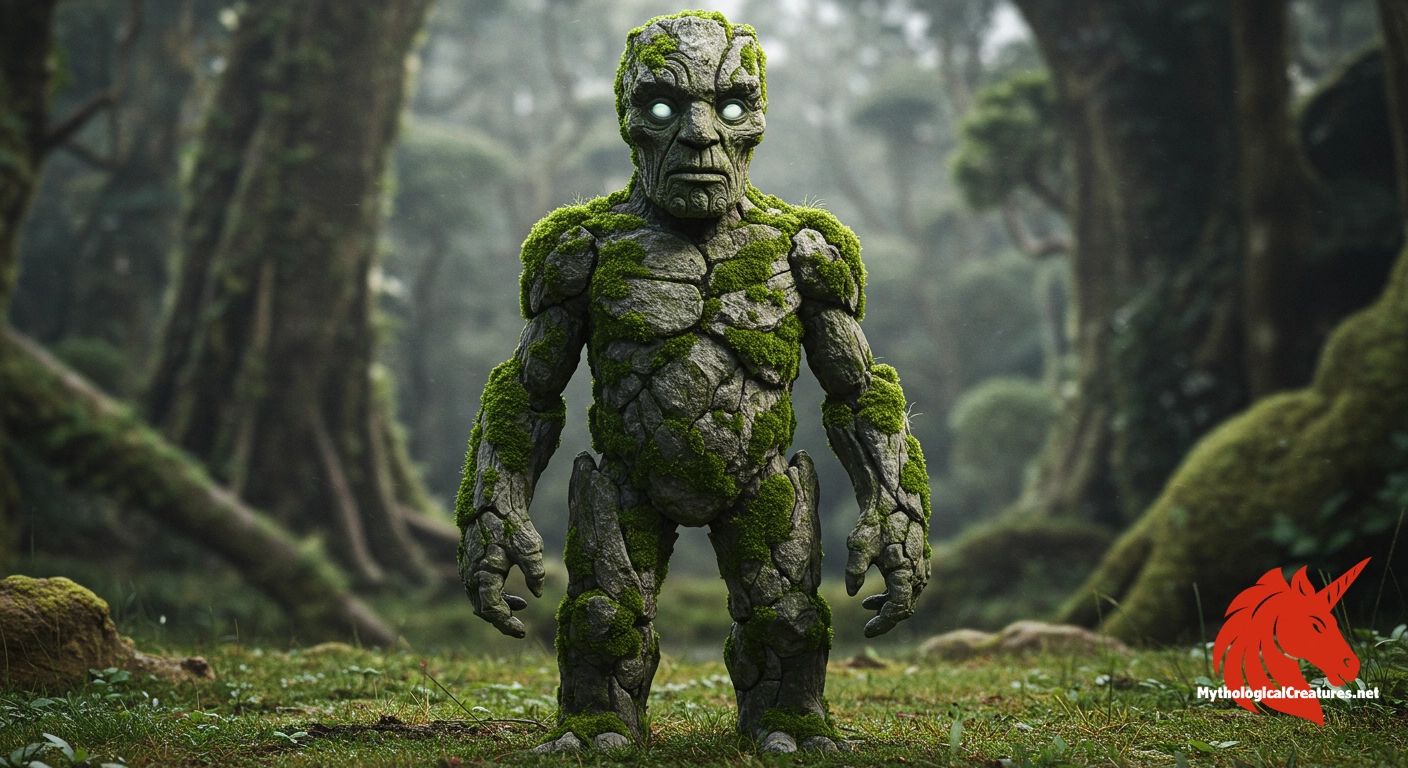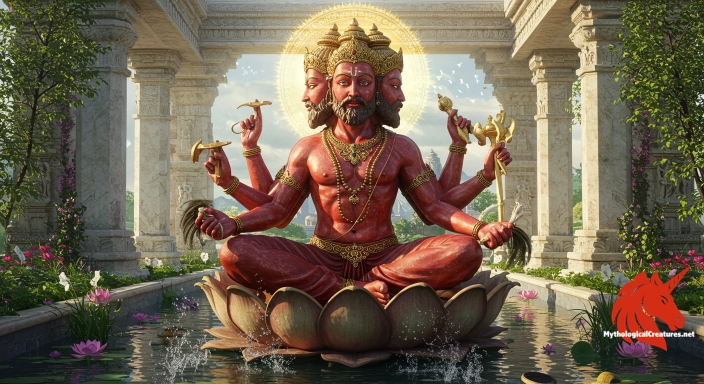Tipua: Tipua are shape-shifting, uncanny spirits from Māori mythology, often linked to natural landmarks.

Tipua
Tipua - Represent the mysterious and transformative forces of nature in Māori folklore.
Origins & First Encounters
The tipua are enigmatic entities deeply rooted in the living traditions of Māori cultural narratives, celebrated for their unpredictable and transformative nature. Their mythological origins trace back to ancient times when the natural world was seen as a living tapestry interwoven with spiritual beings. Tales of tipua were transmitted orally by elders, preserving the wisdom of generations and casting these spirits as mediators between earth and the unseen realm. They are renowned for their ability to shift form, reflecting the ever-changing moods and shapes of the world around them. The tipua were believed to inhabit not only grand geographical landmarks but also the everyday features of the landscape, thereby infusing mundane elements with mystery. Tribal lore often recounts their dual nature, serving both as guardians of sacred sites and as unpredictable forces that could be capricious in their interactions with humans. Encapsulating the Māori respect for nature, they underscore the belief that every hill, tree, and rock might hold a secret life. Their narrative has been a bridge between the past and the present, inspiring awe and caution among those who heed the natural world. Ultimately, the legacy of the tipua is a testament to the Māori emphasis on a deep, respectful symbiosis with nature and the enduring magic it holds.
Source Texts & Tale Variants
Stories of the tipua are preserved in the rich oral traditions of Māori communities, where elders have handed down these narratives through generations. Early accounts were embedded in ceremonial songs, chants, and recitations that celebrated the living landscape. These tales, later noted by early European chroniclers, provide a fascinating glimpse into a spiritual world that defined the relationship between the people and their surroundings. Diverse versions of the tipua stories exist, each shaped by the unique experiences and perceptions of different iwi. In some accounts, the tipua are depicted as protective overseers of significant natural landmarks, while other narratives highlight their mischievous and unpredictable nature. Over time, these stories have taken on layered meanings, offering moral and ecological lessons through vivid imagery. The variations in the tales underscore a tradition where the myth is as dynamic as the natural world it describes. Traditional lore also recounted how interactions with tipua could be both a blessing and a warning, cementing their role in community rituals. This treasure trove of folklore not only enriches Māori cultural heritage but also invites listeners to explore the deep symbolism woven into everyday life.
Form & Powers
The appearance of tipua is fluid and diverse, with accounts describing them as creatures capable of seamless transformation. They have been portrayed in ways that range from ethereal, almost formless apparitions to beings that mirror both human and animal characteristics. Some descriptions evoke images of luminous figures whose outlines blur against the backdrop of dense forests or rugged landscapes. In many stories, their form is intimately linked with natural elements, suggesting that they emerge from the very substances of earth, water, and sky. The mutable nature of their anatomy often makes them appear as transient reflections of the surrounding environment. Witnesses in the lore have sometimes recounted visions where the tipua seem to embody the shifting patterns of light and shadow, leaving onlookers uncertain of their precise form. Their appearance is not fixed but changes to echo the unique characteristics of the land they inhabit. This chameleon-like quality is emblematic of the mysterious forces in nature, embodying both beauty and the potential for disquiet. The detailed depictions of these beings serve as a metaphor for the impermanence and transformative power inherent in the natural world.
Regional Faces
Interpretations of the tipua vary considerably among different Māori iwi, reflecting the diverse landscapes of New Zealand. In some regions, these spirits are closely identified with specific mountains, rivers, or ancient trees, each imbued with its own distinctive aura. Certain communities perceive the tipua as ancestral guardians, whose presence underscores the sacred connection between land and genealogy. In other areas, tipua are depicted as playful yet untrustworthy, inhabiting remote areas or rugged outcrops with a sense of caprice that mirrors local environmental unpredictabilities. Regional narratives have adapted the character of tipua to suit particular natural features, whether it be coastal mist, volcanic soil, or the dense rainforest. This localised variation has allowed the tipua to become a multifaceted symbol, embodying both the bucolic charm and the latent wildness of each locale. As such, various iwi have developed unique rites and customs centred around these beings, reinforcing the interplay between community identity and natural heritage. The multiplicity in portrayal accentuates how folklore is intrinsically linked to the land, transforming myth into a living, evolving dialogue between people and place. Ultimately, the regional narratives remind us that while the tipua share common threads across New Zealand, their essence is always tailored to the specifics of their environment.
Cultural Parallels
The tipua hold intriguing parallels with other shape-shifting and nature-bound spirits across the globe, reflecting a universal human fascination with the mysteries of the wild. Similar to the fae of Celtic lore or the elusive elementals found in various indigenous traditions, tipua embody the ephemeral boundary between the animate and inanimate. Their ability to transform and merge with the natural world resonates with mythological figures who remind us of the inherent unpredictability of nature. Across cultures, such beings serve as symbols of the untamed, often merging beauty with an underlying sense of danger. Polynesian and Pacific traditions also feature mystical entities that, like the tipua, are protectors of the sacred land and harbingers of change. Comparative mythology thus reveals a shared human narrative: the need to ascribe character and complexity to the forces of nature. The fluid identity of tipua is echoed in stories from diverse cultures where spirits dwell in every rock and waterway, blurring the distinction between myth and reality. These cross-cultural connections underscore a mutual respect for the natural environment, as well as the universal propensity to animate its mysteries through legend. In this way, tipua are part of a broader tapestry of folklore that celebrates the interconnection between humanity and the world around us.
Legacy & Modern Evolution
The legacy of the tipua has evolved from ancient oral traditions into a modern emblem of cultural resilience and environmental reverence. Over time, these beings have transitioned in depictions from mysterious guardians of nature to symbols of both the precarious balance and enduring strength of the natural world. Contemporary interpretations in literature, film, and art have reimagined the tipua as figures that encapsulate both the beauty and the peril of unspoilt wilderness. Modern storytellers use their mutable form to explore themes of transformation and continuity, reflecting a society increasingly attuned to the need for sustainable relationships with nature. In a world where the boundaries between the mythical and the mundane are continually reexamined, the tipua serve as a reminder of the rich indigenous heritage that still influences New Zealand’s cultural landscape. Artistic and cultural revivals have brought fresh attention to these spirits, reasserting their importance in national narratives and environmental discourse. Their modern portrayal often incorporates both traditional symbolism and innovative interpretations, thus bridging generations. As New Zealand embraces its ancestral legacies while looking to the future, the tipua remain an enduring symbol of the spiritual interconnection with the land. Ultimately, the transformation of the tipua narrative mirrors society’s own changing relationship with nature and tradition, ensuring that these ancient spirits continue to inspire and provoke reflection in modern times.
Interesting Fact
An intriguing aspect of Tipua is their ability to inhabit everyday natural objects, suggesting that the sacred can be found in even the most common features of the landscape.
Quick Creature Info
Origin:
Features:
Associations:
Our Mythic Legendary Rating:

Also Sometimes Known As:
Habitat:
Supernatural Powers:
Physical Attributes:
Abilities:
Behavior:
Lore:
Related Creatures, Tales or Lore
- TTūrehu
- PPatupaiarehe
- YYōkai
References
Discover Another Mythical Legend You May Not Have Heard Of?
Uncover the mysteries of ancient folklore and expand your knowledge of legendary beings from cultures around the world.
Dare to Meet the Brahma....
Mythical Disclaimer: The images and data on this site are derived from various historical and literary sources, but we have found that many myths often have multiple versions and interpretations across references, sometimes contradictory. As a result, these creature depictions are artistic interpretations—imaginative blends of folklore, legend, and a dash of AI guesswork. Because creature descriptions vary widely, our illustrations and accompanying information represent our best effort to honor mythology while bridging creative gaps. Enjoy these interpretations—just remember, we've done our best to respect the stories and validate available data, but in the realm of mythology, details often shift, imagination leads the way, and nothing is ever set in stone!
Curated by the Mythological Creatures Team (rev. May 2025)
